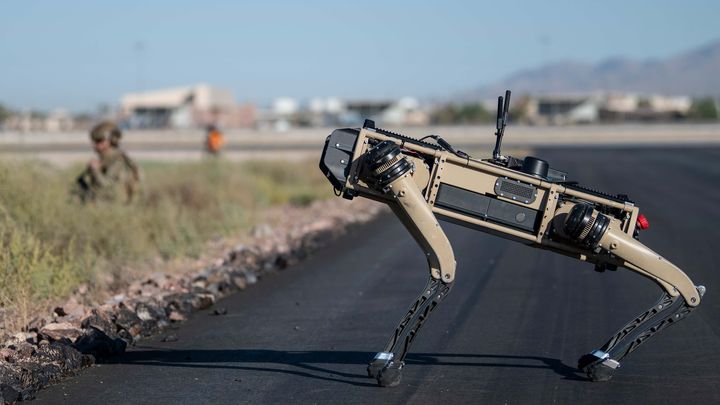Robo-dogs Patrolling a US Military Base Are Real
The U.S. Army recently conducted another demonstration of Advanced Battle Management System, a network for collecting and processing information on the battlefield. One of the elements of the presentation were four-legged robots called Vision 60.

IN A NUTSHELL:
- During the next ABMS demonstration, the American army presented four-legged robots called Vision 60;
- The machines are to perform a number of tasks related to reconnaissance, terrain mapping or communications.
Last week, the U.S. Air Force conducted the second demonstration of a solution known as Advanced Battle Management System (ABMS for short), a digital network that will collect and process information live for the U.S. Army and its allies. One of the elements of ABMS are the four-legged robots known as Vision 60(so-called Q-UGV - Quadrupedal Unmanned Ground Vehicles).
During the demonstration, the main task of the machines developed by Ghost Robotics was to patrol the boundaries of the Nellis Air Force Base, but the assumption is that the robots are also to perform other types of missions, such as reconnaissance, information gathering, terrain mapping and communication. Probably for this reason several variants of the machine have been developed - some have antennas on the "back", others wear additional sensors or specialized equipment.
Interestingly, one of the characteristics of Vision 60 is its relatively low level of complexity. This makes the machine more resistant, more skillful and cheaper to maintain.
"Beyond all-terrain stability and operation in virtually any environment, a core design principle for our legged robots is reduced mechanical complexity when compared to any other legged robots, and even traditional wheeled-tracked UGVs. By reducing complexity, we inherently increase durability, agility and endurance, and reduce the cost to deploy and maintain ground robots. Our modular design even supports field swapping any sub-assembly within minutes. Strategic partners can build solution-specific Q-UGVs for virtually any use-case with their choice of sensors, radios and even size the robot to suit specific requirements by licensing our reference designs," read the description on the manufacturer's website.
0
Latest News
- This is expected to be the biggest year in the company's history. Blizzard prepares an offensive that will overshadow previous years
- Bethesda envied CD Projekt RED? Starfield may undergo a Cyberpunk 2077-style metamorphosis
- Season 2 has just started, and Todd Howard is already writing the script for the third one. Fallout 5 will be changed by the TV show
- 5 games to grab on Amazon Prime Gaming. Among them, a collection of RPG classics
- My experience attending the 2025 Game Awards, and why I loved it

